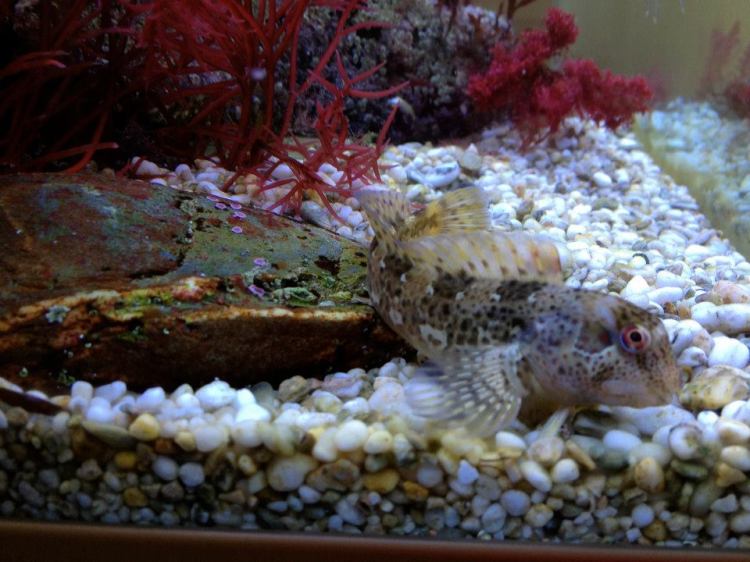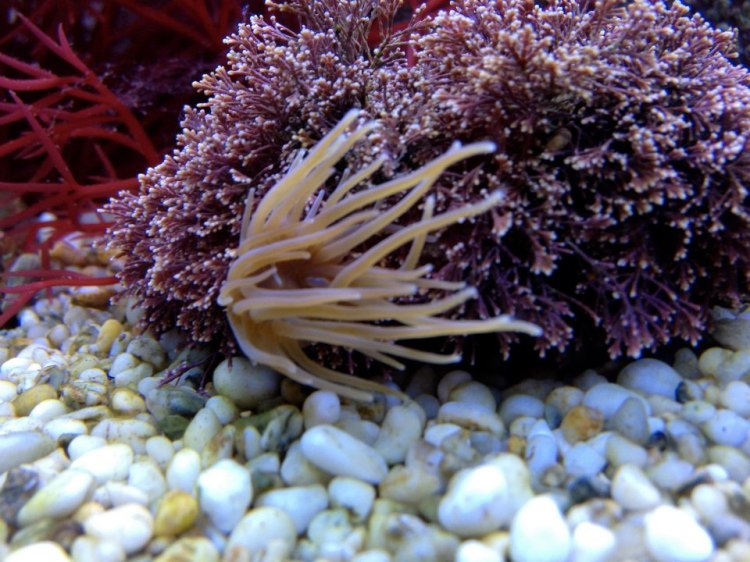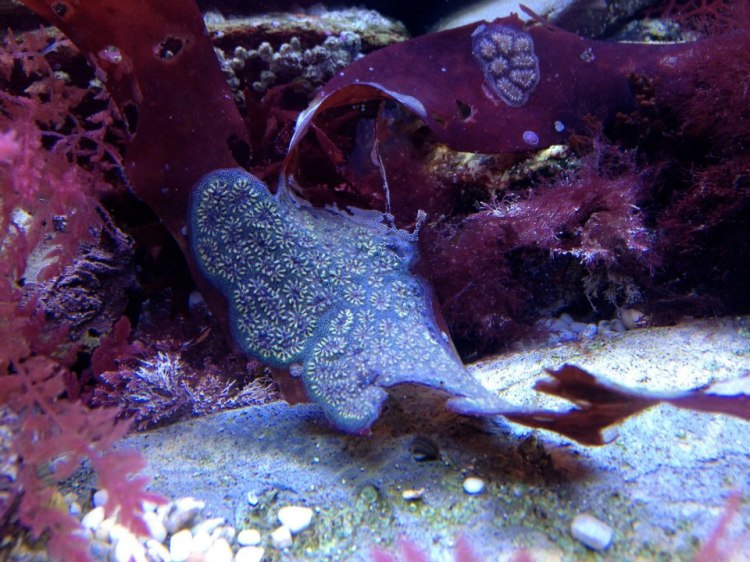Hello! For the last half year or so, I have been messing with a marine aquarium housing sea weeds and critters collected from local rock pools here in Cornwall. I thought it would be fun to blog about my aquarium project, especially after I discovered that it is quite easy to take nice aquarium pictures using an iPhone (which I found nearly impossible using a standard digital camera). After doing some internet research, I settled on a Red Sea Max 130D ‘plug-and-play’ aquarium (I will post about the actual tank later). I could not find much information on the web on temperate marine tanks, especially ones without a chiller or a sump. and few of those seem to focus on seaweeds. So who knows I may have found a niche. Below I have posted some pictures from when I was setting it up last year:
Half a bucket of gravel collected from a nearby beach, RO water taken home from the lab where I work (carried back 2×10 L at the time, the tank is 130 L) mixed with a free bucket of sea salt that came with the tank. Few sea weeds and not too many rocks. I have since replaced the rocks with bigger ones; most critters are benthic and you do not want to have too much ‘open water’ around with nothing in it. Although too bare, I do like the purple look of this set-up, which has since disappeared because of inevitable algae taking over from the purple crustose seaweeds.
A shanny Lipophrys pholis, this is a very common fish around here that can easily be picked up when turning stones at low tide. The branched seaweed on the left is Solier’s red string weed Solieria chordalis; in the back on the right there is a little pluck of Berry wart cress Sphaerococcus coronopifolius.
A snakelocks anemone Anemonia viridis. Behind it some Slender-beaded coral weed Jania rubens. This weed died off quite quickly; first it turned a bright orange, then white.
The Star ascidian Botryllus schlosseri, a colony-forming tunicate. It did not survive for too long, but that might just have been because the particular broad-leaved red seaweed they grew on are very popular with prawns and hermit crabs. What animals and sea weeds do well has been trial and error. I might compile a list of ‘easy’ species and ones to avoid at some point.




seems like a problem on your end, probably easiest to ‘block sender’ cheers